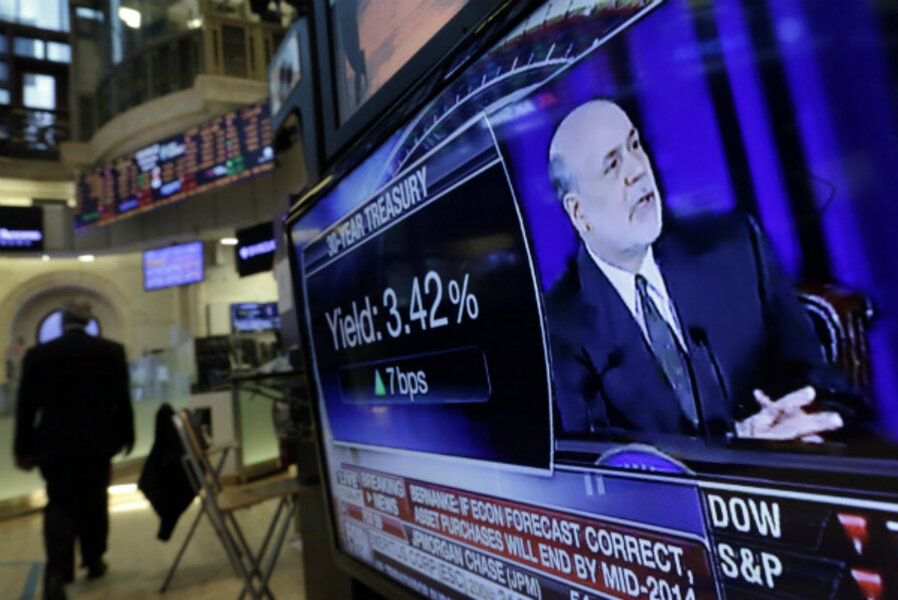US economic growth revised down: Will Fed keep foot on accelerator?
Loading...
It turns out that the US economy started off this year much slower than first reported – news that could nudge the Federal Reserve away from any imminent retreat from stimulative monetary policies.
Gross domestic product (GDP) grew at an annual pace of just 1.8 percent in the first quarter, the Commerce Department reported Wednesday. That’s a big downward revision from the 2.4 percent estimate the government offered a month ago.
The downshift reflected new and smaller estimates of consumer spending, as well as a weakening of international trade and business investment.
The news isn’t a severe disappointment. Economists knew that, as the year began, consumers would be hit by changes such as the expiration of a temporary 2 percent reduction in worker payroll taxes. And during the second quarter, the US has continued to chart a path of economic growth, despite the onset of mandated federal spending cuts known as the “sequester.”
But the new portrait of the economy underscores that the pace of progress during the current recovery remains tepid.
That downbeat interpretation was greeted by investors as a positive thing. Financial markets have been on edge in recent days over concerns that the Federal Reserve may be close to a major policy change – a scaling back of its longstanding stimulus efforts. Signs of weakness bolster the view that the change in Fed policy may not come as soon as September, after all.
Members of the Fed’s policy committee have been seeking to support an economic recovery through both a near-zero short-term interest rate and through a bond-buying program designed to keep long-term interest rates down.
“They might decide to wait to taper bond buying until next year, as fiscal austerity could take a bigger bite out of growth in the absence of sufficient monetary stimulus,” economist Paul Edelstein of IHS Global Insight writes in an analysis of the GDP report.
Recently, Fed Chairman Ben Bernanke used a car-driving analogy to describe the policy decision ahead. He said the central bank isn’t about to put its foot on the economic brakes, by constricting money supply. But if the economy is improving at a decent and steady clip, the Fed might start easing pressure on the accelerator.
To investors, though, any downshift in the Fed’s aggressive support for the economy is important. It signals that an era of stimulus may be winding down, and that the trend in long-term interest rates could be upward.
The good news in the US economy is that the housing market is in recovery mode, homebuilding activity is on the rise, and the unemployment rate has been moving gradually lower. Consumer confidence rose to a 5-1/2 year high in a survey released this week by the Conference Board, a research group in New York.
The challenges include tepid wage growth and concerns about the economic health of global trading partners.
Much of Europe is in recession, Japan has been struggling to revive its economy, and China is coaxing a slow shift from growth fueled by exports and infrastructure toward a greater emphasis on domestic consumer spending.
In the US, per capita disposable income was $32,729 in April, up $26 from six months earlier, after adjusting for inflation. That dollar figure, from the Commerce Department, is in 2005 dollars. In current dollars, that per capita income would be about $39,000.
Many forecasters expect the economy to pick up at least a bit more momentum by later this year. But the second quarter could be about as cool as the first. The firm Macroeconomic Advisors, in an estimate Tuesday, predicted that second-quarter GDP growth will come in at an annual rate of about 1.5 percent.








